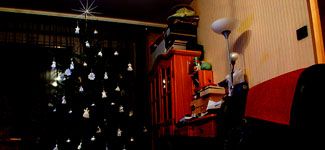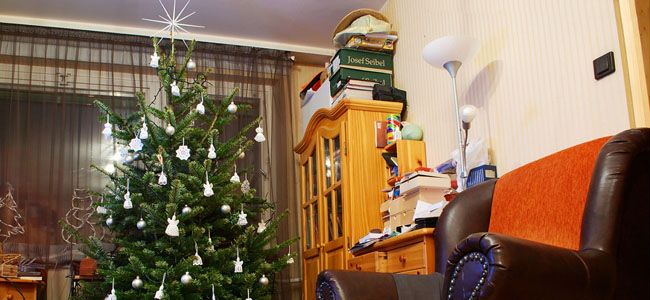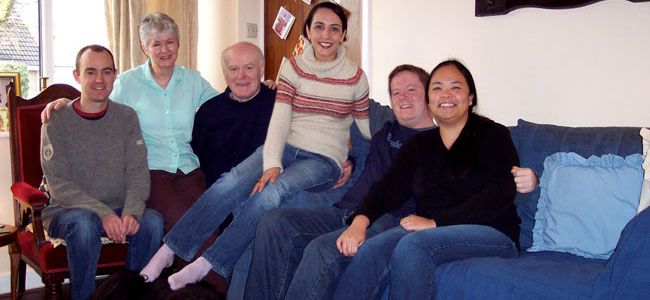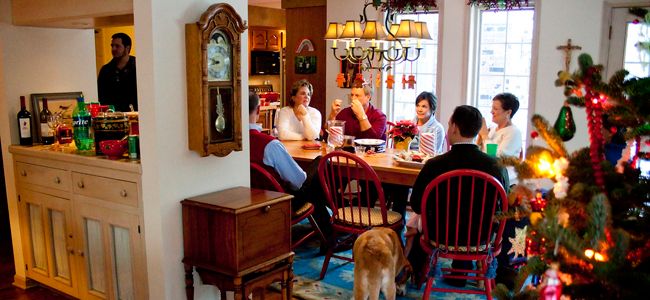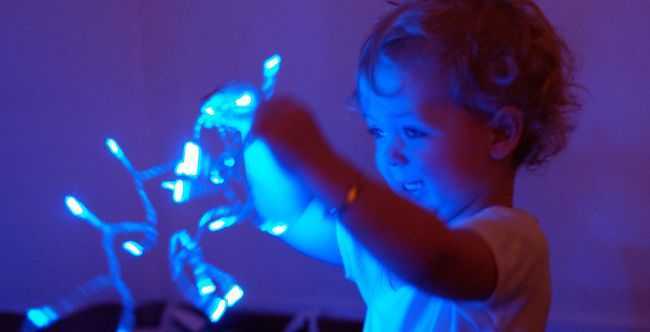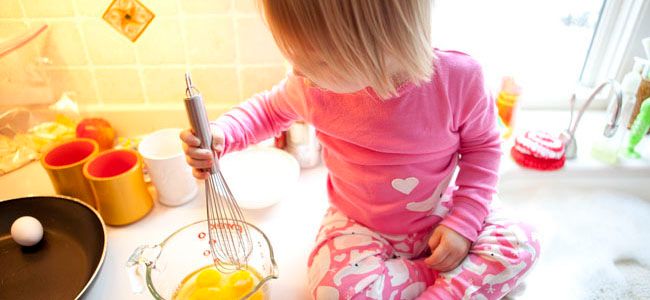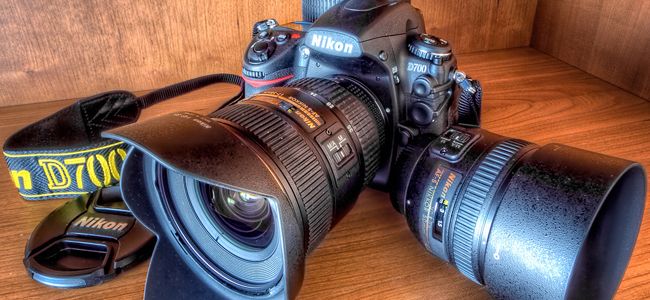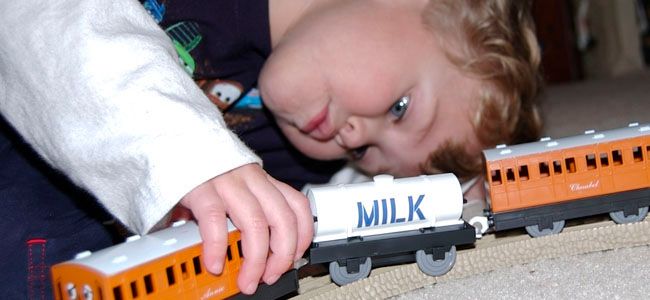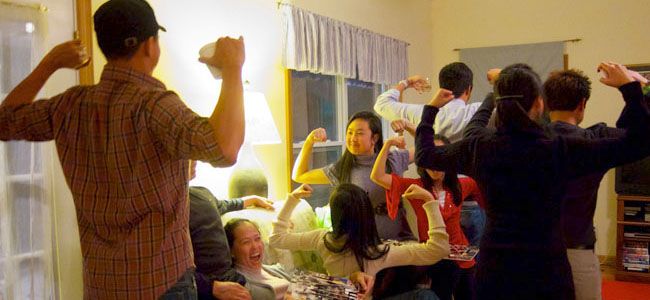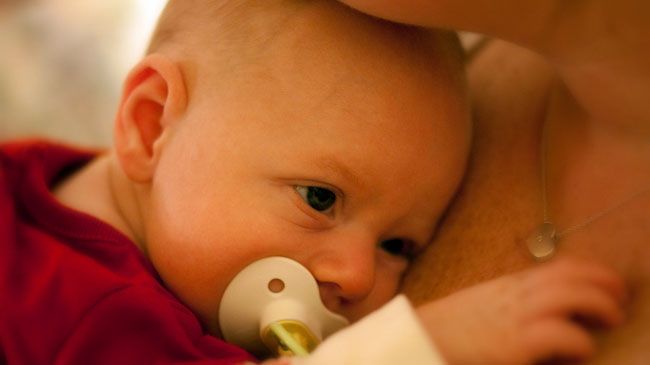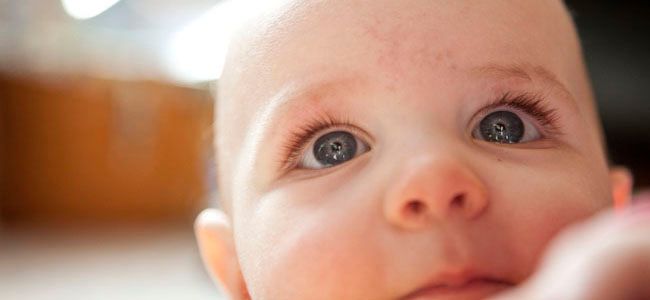Quick Links
Christmas and holiday parties mean getting lots of family and friends together. And getting the family together usually means lots and lots of pictures! Here are some of our favorite tips for taking better photos this holiday.
You might use a tiny digital camera, your smartphone, or a DSLR. It doesn't matter, because the principals of photography are pretty similar regardless of the equipment you're using. With these few tips, you can improve your family photos, and have the perfect Christmas pics for which your whole family begs for a copy.
First, Shoot Test Shots
Before people start showing up, take a few shots of the ambient light in the room. If you use manual settings, this is especially useful, because you can figure out the best aperture, ISO, and shutter speed settings for your images before your family comes around.
Although light through the windows will probably change after several hours, electric lights won't fluctuate. Given this, you should be able to stay within a range of settings, provided you stay indoors and in similar light settings.
You can also use these test shots to start thinking about possible composition for your photos (which we'll talk more about in just a bit).
Don't Make Your Family Pose
"Everybody line up on the couch. Smile. Say 'Cheese' and Look happy!" Posed pictures are unnatural and don't do a lot except show your family pretending to smile. You probably won't be able to avoid taking at least one posed picture like this at every family gathering, but it doesn't represent the event very well.
Approach family photography like a photojournalist. There's an important event happening, and you're trying to capture it as it happens. Is the baby laughing? Did grandpa fall asleep? Did dad sneak outside to smoke and get caught by mom? It can be far richer and more enjoyable when you look back on these pictures to see people as they were, doing their own thing. When you pose pictures, you're only capturing the fact that they were there, smiling rigidly.
Think About Light
Rule one is photography is about capturing light. How is the room you're in lit? Is it dim or dark? Is bright light coming in from the windows? Is there warm light coming from the light bulbs, lamps, or Christmas ornaments?
Lighting is probably the single most important part of good pictures and can make or break them. Pay attention to the colors present in the room and use different settings to try and capture them.
At the very least, try to keep your subjects from being ruined by backlighting or flashed brightly in front of a black shadow background.
Don't Be Afraid of The Manual Settings
Manual ISO, Aperture, and Shutter Speed settings are not complicated if you learn a little bit about the elements of exposure. There's no shame in using automatic settings; they're quite useful in situations where light, people, and environment change rapidly. However, there are pictures for which an automatic setting doesn't have the artistic nuance you need. That's especially true when you're trying to capture warm, soft, glowing light from Christmas decorations and low light environments. In that case, manual settings are sometimes the only way to go.
Some cameras don't have an "M" for Manual setting. These might have a "P" for Progam mode. Familiarize yourself with the camera and play around with it, shooting test shots before the big Christmas party. Don't afraid to experiment and mess up a few dozen shots! And if manual continues to be a huge struggle, the auto setting is only a few clicks away. You can even control your iPhone's camera manually.
Even better, if you're using a DSLR, you can try a semi-automatic mode like Aperture Priority mode, where you set the aperture and ISO, but let your camera set the shutter speed based on its light meter reading.
Take Pictures Multiple Times
Bracketing is an important word in the Photographer's vocabulary. Since digital photography has made taking a gazillion pictures so cheap, take as many as you can. Remember, that moment will never happen again, so taking the same picture twenty times and picking the best image is better than taking it once and wishing you had a better shot.
Be A Storyteller
Remember when we talked about not posing your family? The photojournalist metaphor still applies. When you're taking pictures, take them with the result in mind. A good photo should tell a story, even if it's a little one, and you should think about the story you're telling when you take the shot.
What are the people in your pictures doing? Are they chopping vegetables, unwrapping presents, watching TV, or getting blasted on eggnog? People are one of the most powerful subjects to photograph because we immediately can feel empathy for them and relate to what they're doing. Capture facial expressions and events, actions, happiness, tears, and laughter. When you tell a story with your pictures, you make it easier to return to that moment again, even if you aren't a skilled photographer.
Pay Attention To Composition
You might not be an artist, but photography is a visual art form. Again, you have to begin with the end in mind; think visually when you shoot. Read up on the golden mean ratio and the rule of thirds for some insight on how to make your shots look more interesting.
Too abstract? Shoot pictures only of the subjects you want in your final shot. Don't stand across the room and get lots of details in the shot that do nothing to help the photo. When you take pictures of the kids, take a knee and get down on their level, so that all of your shots aren't of the top of their head. And don't always put your subject dead in the center of the shot because it gets boring, particularly when you're showing off your pictures later.
And if you want to take your composition beyond the simple rule of thirds, take some time to learn about using the leading lines in your space and how you can use the foreground and background to make your photos stronger. Remember when we talked about taking some test shots around your home before guests arrive? That's also the perfect time to start thinking about how you can use the natural compositional elements in your space.
Try it With and Without the Flash
When you bracket, traditionally, you take the same shot with multiple aperture or shutter speed settings to make sure you expose properly. With digital cameras, you have a good idea immediately if you've exposed your image well or not, so try bracketing your image with and without flashing, especially if you're using the automatic setting.
Use a Tripod If You Have To
It doesn't lend itself well to shooting like a photojournalist, but using a tripod will allow you to use slow shutter speeds to capture the light of dim environments. Christmas trees and low light can look quite beautiful with long exposures, so if you're going to pose your family, make use of the fact that they're sitting still for so long and set up that tripod!
Use The Lowest Number ISO Setting Possible in Dark Rooms
The lower the ISO, the less grain you'll get in your low light shots. If you're going to have a lot of these, using an ISO of 200, 400 or 800 is better for graininess than 1600 or higher. You may have to compensate for lower ISO settings by using longer exposures and a tripod, but you'll be able to keep your images from being grainy.
Bonus Tip: If It's Not Perfect, Photoshop It!
We said it earlier: that moment is special... and you'll never be able to go back to it. If your shots aren't exposed perfectly, Photoshop, Photoshop Elements, or GIMP can give you the tools to make them better. You might take a great composition of a cute moment, but find that the exposure settings are not perfect, or that the white balance is a little off. While you should hope to expose pictures perfectly every time, the fact is this is not likely, particularly if you're picky about your images. Here are our favorite HTG articles on using photoshop to improve your photographs:
- How to Learn Photoshop
- Learn How to Make HDR Images in Photoshop or GIMP With a Simple Trick
- How To Fix the Dark Shadows that Ruin Great Photos
- Learn To Adjust Contrast Like a Pro in Photoshop, GIMP, and Paint.NET
- How to Get Amazing Color from Photos in Photoshop, GIMP, and Paint.NET
Image Credits: Photos by Murilo Cardoso, zolakoma, Ewen Roberts, Jeffrey Smith, Phil Campbell, Rebecca Peplinski, marcp_dmoz, KungFuStu, Greg Wagoner, Phong Nguyen, Brad Trump Photography, Deana, Duane Schoon, Liam Burke, and Kevin Dooley, all via Flickr, available under Creative Commons.



